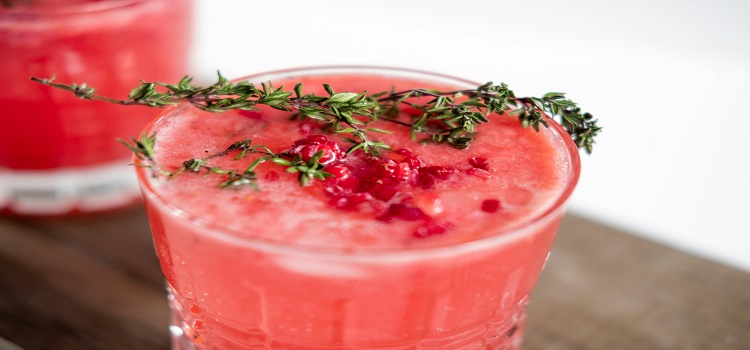As an Amazon Associate I earn from qualifying purchases.
Exploring the Milk Juicer: A Versatile Appliance for Nutrient-Rich Beverages
Introduction: The milk juicer is a modern kitchen appliance designed to extract fresh, nutrient-rich milk from various sources such as nuts, seeds, grains, and legumes. This innovative device offers a convenient and efficient way to create plant-based milk alternatives at home, providing a healthier and more sustainable option compared to store-bought varieties. In this guide, we’ll delve into the uses, benefits, and practical aspects of using a milk juicer to incorporate homemade plant-based milk into your daily routine.

Uses:
- Producing dairy-free milk alternatives from nuts (e.g., almonds, cashews), seeds (e.g., hemp seeds, sunflower seeds), grains (e.g., oats, rice), and legumes (e.g., soybeans, chickpeas).
- Enhancing beverages, smoothies, and recipes with fresh, homemade plant-based milk for added flavor and nutrition.
- Catering to dietary preferences and restrictions, such as vegan, dairy-free, and lactose intolerance, by offering a versatile and customizable milk-making solution.
Benefits:
- Nutrient-Rich: Homemade plant-based milk offers a rich source of essential nutrients, including vitamins, minerals, and antioxidants, without added preservatives or artificial ingredients.
- Customization: Milk juicers allow for customizable milk-making options, enabling users to adjust the sweetness, thickness, and flavor of their milk according to personal preferences and recipe requirements.
- Cost-Effective: Producing homemade plant-based milk with a milk juicer can be more cost-effective in the long run compared to purchasing pre-packaged alternatives, saving money and reducing packaging waste.
How to Do It:
- Select Ingredients: Choose your desired base ingredient(s) for making plant-based milk, such as almonds, oats, or soybeans.
- Preparation: Soak the chosen ingredients in water for several hours or overnight to soften them and enhance the blending process.
- Blending: Drain and rinse the soaked ingredients, then add them to the milk juicer with fresh water at the recommended ratio.
- Juicing: Turn on the milk juicer and allow it to process the ingredients, extracting the liquid milk while separating the pulp or residue.
- Straining (Optional): For a smoother texture, strain the freshly juiced milk through a fine mesh sieve, nut milk bag, or cheesecloth to remove any remaining solids.
- Storage: Transfer the homemade plant-based milk to a clean, airtight container and refrigerate promptly. Use within a few days for optimal freshness and flavor.
Pros and Cons Table:
| Pros | Cons |
| Nutrient-rich homemade milk alternatives | Requires soaking and preparation of ingredients |
| Customizable flavor and thickness | May require additional straining for smoother texture |
| Cost-effective compared to store-bought | Limited capacity for larger batches |
| Environmentally friendly | Regular cleaning and maintenance required |
FAQ:
- Can I use any ingredient in a milk juicer to make plant-based milk?
- While many ingredients can be used, it’s essential to choose those that are suitable for juicing and have a high liquid content, such as nuts, seeds, grains, and legumes.
- Do I need to soak the ingredients before juicing?
- Soaking the ingredients before juicing helps soften them and improve the blending process, resulting in smoother and creamier plant-based milk.
- Can I sweeten the homemade plant-based milk?
- Yes, you can sweeten homemade plant-based milk with natural sweeteners like dates, maple syrup, or honey, according to personal taste preferences.
- How long does homemade plant-based milk last in the refrigerator?
- Homemade plant-based milk should be consumed within 3-5 days when stored in a clean, airtight container in the refrigerator to maintain freshness and prevent spoilage.
- Can I use the leftover pulp from juicing for other purposes?
- Yes, leftover pulp from juicing can be repurposed for baking, cooking, or adding texture to recipes such as smoothies, oatmeal, or baked goods.
- Are milk juicers easy to clean?
- Yes, most milk juicers are designed for easy cleaning with removable parts that are dishwasher safe or can be rinsed under running water. Regular cleaning after each use helps maintain hygiene and prolong the lifespan of the appliance.
- Can I use a milk juicer to make non-dairy yogurt or cheese?
- While milk juicers are primarily designed for extracting plant-based milk, some models may offer additional features or attachments for making yogurt, cheese, or other dairy alternatives.
- Is homemade plant-based milk suitable for individuals with nut allergies?
- Homemade plant-based milk can be made from allergen-friendly ingredients such as oats, rice, or seeds for individuals with nut allergies, offering a safe and nutritious alternative to dairy milk.
- Can I adjust the consistency of homemade plant-based milk?
- Yes, you can adjust the thickness or consistency of homemade plant-based milk by varying the ratio of ingredients to water during the juicing process.
- Are there any tips for enhancing the flavor of homemade plant-based milk?
- To enhance the flavor of homemade plant-based milk, you can add natural flavorings such as vanilla extract, cinnamon, cocoa powder, or spices like turmeric or ginger for a unique taste experience.
Conclusion: Milk juicers offer a convenient and efficient solution for creating homemade plant-based milk alternatives that are fresh, nutritious, and customizable to individual preferences. With simple steps and versatile options for ingredients, flavors, and textures, homemade plant-based milk can easily become a staple in your kitchen, providing a healthier and more sustainable alternative to store-bought varieties. By understanding the uses, benefits, and practical aspects of using a milk juicer, you can enjoy delicious and nutrient-rich milk alternatives while reducing waste and supporting a healthier lifestyle.
As an Amazon Associate I earn from qualifying purchases.
Leave a Reply